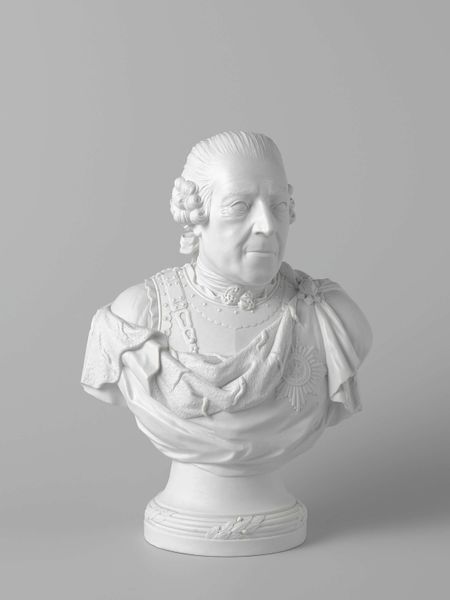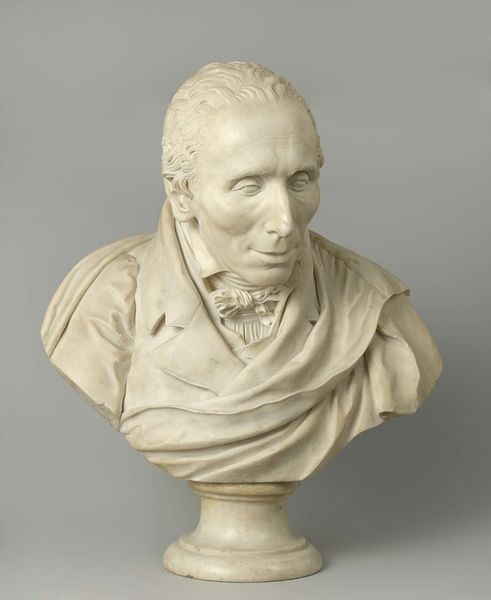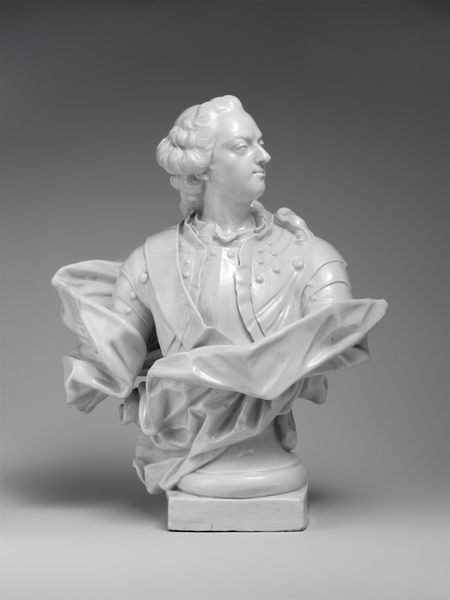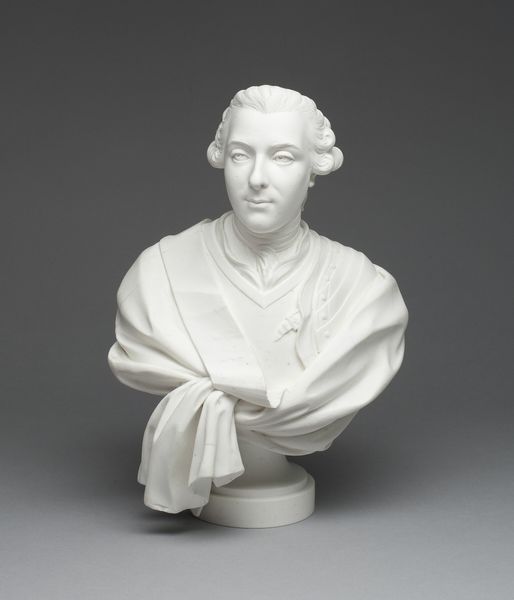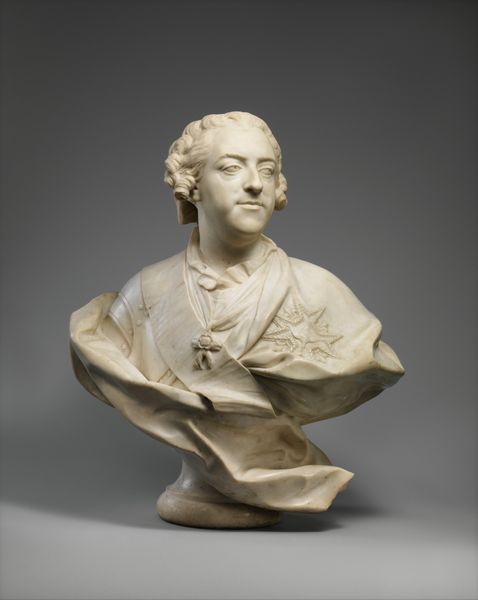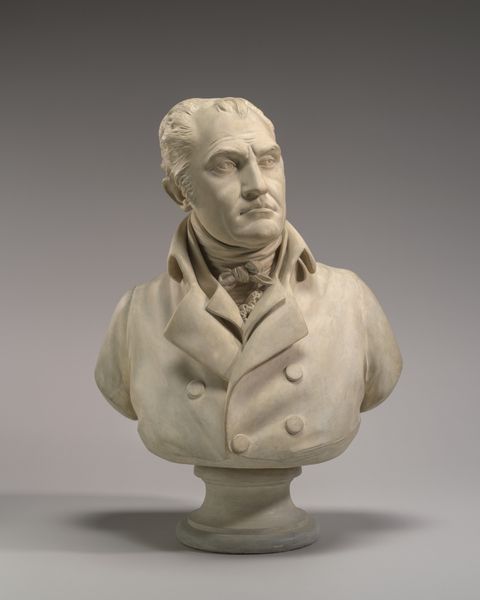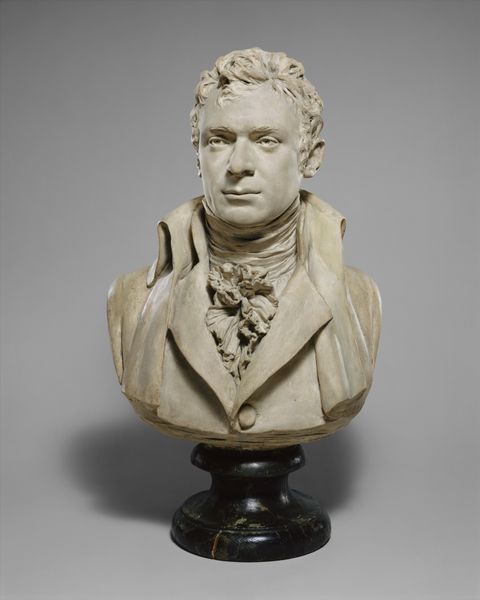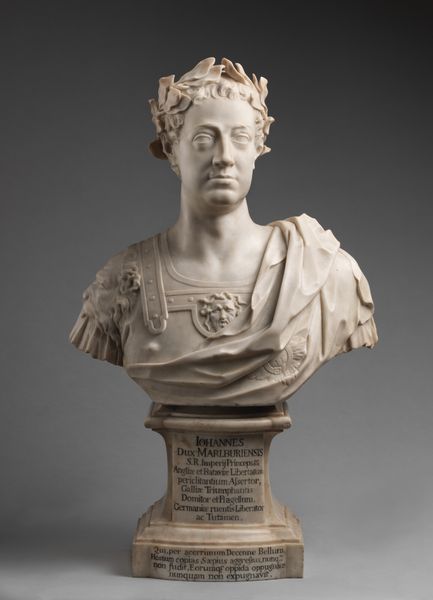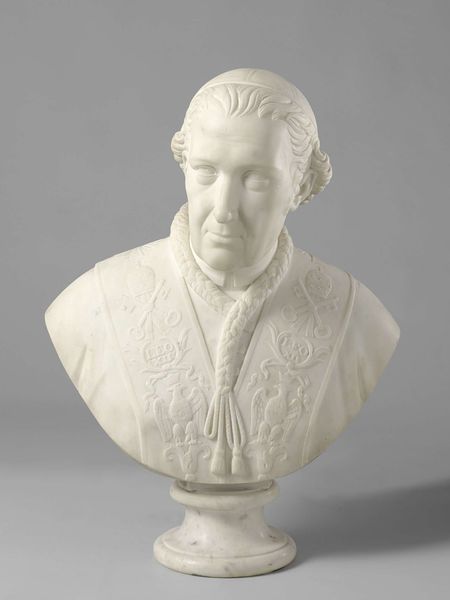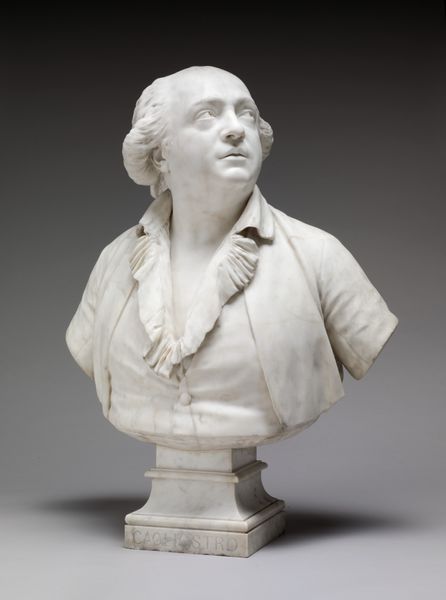
Skatmester, grev Heinrich Carl Schimmelmann med elefantordenen 1782
0:00
0:00
sculpture, marble
#
portrait
#
neoclacissism
#
sculpture
#
sculpture
#
marble
Dimensions: 72 cm (height) (Netto)
Editor: This is Luigi di Giuseppe Grossi’s marble sculpture from 1782, titled "Skatmester, grev Heinrich Carl Schimmelmann med elefantordenen", or "Treasurer, Count Heinrich Carl Schimmelmann with the Order of the Elephant." It feels so…stately, almost severe. What’s your interpretation of this piece? Curator: Well, beyond its aesthetic qualities and technical brilliance, consider the subject: Schimmelmann. He was a prominent figure, but his wealth was largely derived from the transatlantic slave trade. Understanding that changes how we perceive this seemingly innocuous portrait, doesn’t it? Editor: Definitely. I hadn't considered that angle at all. So the sculpture itself becomes… problematic? Curator: Precisely. It glorifies a man whose fortune was built on exploitation. The Order of the Elephant, his opulent attire – these are symbols of power inextricably linked to a brutal system. It invites questions about how museums display such objects. Should we be celebrating figures like Schimmelmann without critically examining the source of their wealth and influence? Editor: It makes me wonder what Grossi, the sculptor, thought of Schimmelmann's legacy, especially because he was also of Italian descent. Do you think he included subtle criticisms in the artwork itself? Curator: That's a compelling question. While the sculpture seemingly lacks explicit critique, the very act of immortalizing Schimmelmann normalizes his position and, by extension, the system that enabled it. As viewers, we must actively resist passively accepting this narrative. Instead, we should be asking: who is absent from this representation, whose stories are silenced in the creation and display of works such as these? Editor: That’s really given me a lot to think about. It’s not enough to admire the technique; we have to interrogate the context. Curator: Exactly. And that interrogation is crucial for building a more equitable and critically aware understanding of art history and its impact on contemporary society.
Comments
No comments
Be the first to comment and join the conversation on the ultimate creative platform.
